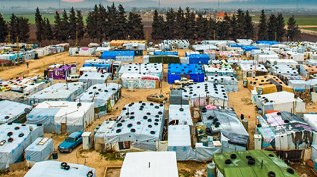Blockchain Explained: Risks And Opportunities For Philanthropy

Editor’s Note: This blog post originally appeared here.
These days, it seems like everyone is talking about how blockchain is the coolest new thing—capable of changing everything, including aid and philanthropy. Case in point: Researchers at Stanford have been compiling a “Master List of Blockchain for Social Good Projects” that’s already 236 entries long as of this writing! With all that excitement, how should nonprofits think about this emerging technology and the opportunities and risks it might unlock?
What is blockchain?
At its core, blockchain technology is a way of creating trust in a community that doesn’t rely on a central actor. For example, when you put money in a bank account, you’re relying on the bank (a central actor) to keep track of your funds correctly. If instead you store some funds in a blockchain that supports financial transactions, there is no one person or organization in charge of ensuring everything happens correctly. Rather, the trust is distributed across the entire community, which makes it impossible for a single actor to compromise the system’s integrity.
Blockchains pull this off by sharing a digital record of all the activity in the community between all the members of that community, who each check to make sure that the activity is recorded correctly. This process of validating the shared activity record is usually called “mining,” since those people carrying out the validation process are frequently encouraged to do so with small financial incentives, just like miners looking for small pieces of gold.
Why is everyone so excited about it?
Society is built on the creation and management of trust between people. If we were able to use technology to make this process easier, more scalable, and more efficient, it could potentially be world changing. Imagine if we didn’t need to rely on expensive foreign exchange fees and complex international bank infrastructure to send funds around the globe? What if societies could use a shared public record of election results to confirm that an election was carried out fairly instead of having to trust an opaque government-run commission?
Blockchain technology’s ability to, at least in theory, do everything from solving wage theft to rendering banks obsolete is the main driver behind all the buzz.
This excitement has become so widespread that even organizations like the United Nations have started their own blockchain-focused research teams.
How is blockchain being used in the social sector so far?
Financial transactions are simplest way that blockchain technology is being used in the social sector so far. With the explosion in value of bitcoin, the first and most famous implementation of a blockchain, many organizations are starting to accept donations in blockchain-based formats (also known as cryptocurrencies). While there’s also been discussion about using blockchains to streamline the process of making fund transfers around the world without relying on traditional foreign exchange networks, the volatility in price and government regulations at the moment make this a dangerous option for most organizations right now.
Blockchains can also make it easier for people to digitally prove their identity. For example, Making Cents International in partnership with BanQu have created a blockchain-based tool for refugees to carry their validated personal data with them, making it much easier for them to open bank accounts, receive loans, and access other important financial tools in their new homes.
Transparency is another area where blockchain has the potential to make a major impact. Blockchains could be used to trace how aid funds change hands in a public and reproducible way, minimizing the chances for corrupt intermediaries diverting resources away from their intended destinations. Similarly, Bext360 is using blockchain technology to ensure that coffee farmers are being paid fairly for the products they produce. An even more transformative possibility would be to enable communities to provide verifiable feedback on the services they receive from governments and nonprofits. This kind of blockchain hasn’t been created yet, but could radically change the way development services are delivered.
What risks might blockchain unlock?
Like any new technology, it’s important to consider the social implications of blockchain before rushing to build new social services around it. This is particularly critical when these services are developed and tested on people who are already facing major risks, like Rohingya refugees in Bangladesh. In these situations, careful consideration of participants’ privacy, identity, and agency is an absolute requirement.
Finally, we should be wary of blockchain implementations where the incentives of the participants are different from the incentives of the maintainers. For example, an organization that implements a blockchain-based tool to create digital identities for refugees might be offering a useful and important service.
There’s a problematic power imbalance between the people using the service and the organization maintaining the system when control of the data’s integrity and the blockchain validation process remain in the hands of a single central actor.
For these implementations to truly embrace the decentralized trust central to blockchain’s potential, they must allow participants in the service to be responsible for its upkeep. This is much more easier said than done, since open and equal participation requires computing power to validate the shared record and can remove the implementing organization from the system entirely.
Blockchain has the potential to be transformative in the social sector and beyond. But, just like with the internet in the mid 1990s, we have a long process of figuring out the technical, social, and ethical implications of this highly-publicized, new technology.
